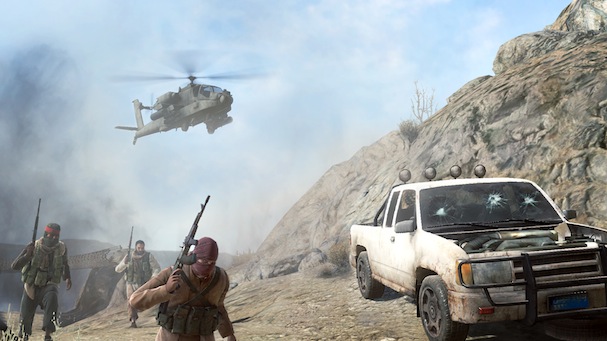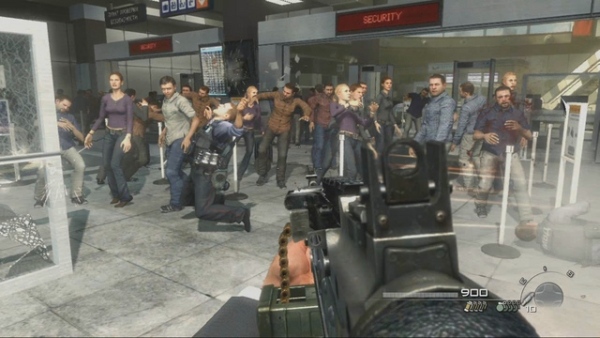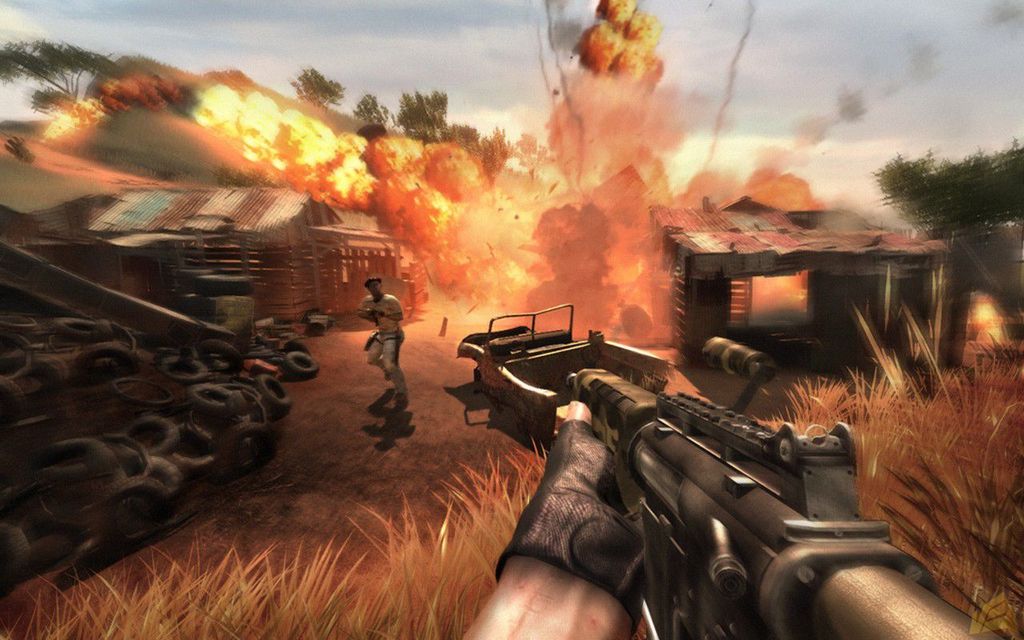This post has not been edited by the GamesBeat staff. Opinions by GamesBeat community writers do not necessarily reflect those of the staff.

Critics have spilled plenty of ink over the Taliban controversy in the multiplayer component of the recently released Medal of Honor, but playing the game’s single-player campaign has brought to my mind another sensitive topic: the question of civilian casualties in warfare. While the presence of non-combatants and killable civilians has long been a staple of open-world action games like the Grand Theft Auto series and PC role-playing games like Ultima and Fallout, it’s something often conspicuously absent from military shooters.
Developers design many of these games so that civilians are not even a factor, such as setting the action on Mars, on a derelict ship, or in a time after a disaster has conveniently decimated the population. However, Medal of Honor is set in a real-life, present-day conflict and simply can’t avoid the issue. The question remains, is it possible to create a shooter where the presence of civilians on the battlefield is a real factor, or is it simply too difficult to do so in an interactive medium without inviting controversy?
Modern Warfare 2 is the most obvious example of a game that pushes the limits by including the extremely contentious “No Russian” level. In it, the player is asked to participate in a terrorist attack on a busy airport. Unlike many controversies that hit the mainstream press, “No Russian” remains contentious even among core gamers. I don’t put much stock into conspiracy theories about how developer Infinity Ward included the sequence for the express purpose of causing a dust-up, but there are legitimate concerns about whether the level was in good taste.
On the other hand, many arguments I’ve heard against level’s inclusion seem to stem from a complete misunderstanding of how the fits in with the larger narrative. (Spoiler ahead.) The reason you are ordered to go forward with the attack and not simply take out Makarov and foil the plot is because General Shepherd, your only contact with the government, is the villain. He recruited and placed you there for the express purpose of provoking war with Russia.

Infinity War deserves credit for pushing forward with something so provocative. “No Russian” was simultaneously a way to make the player participate in an atrocity that was quite literally beyond their control and a way to deconstruct the criticism that their games are simplistic shooting galleries where you just shoot everything you see as fast as you can.
But Modern Warfare 2 still doesn’t go as far as to include civilians in the actual theater of war. Despite levels that take place in Afghani towns, Brazilian slums, and suburban America, there is not a single civilian to be seen on the battlefield, and you are never asked to make a snap decision in the heat of battle as to whether you are looking at a militant or an unarmed villager.
Even more so than Modern Warfare 2, the Medal of Honor reboot places you in situations where you’d expect target discrimination to be a factor. In fact, the game warns you on multiple occasions to “check your fire” and be mindful of friendlies and civilians in combat zones. But in the entire game you really only see one civilian. This occurs during a non-interactive cut-scene where you watch one of your teammates perform a non-lethal, stealth takedown. There is also one prerendered cinematic that involves friendly fire against allied forces, but when you are actively controlling your character, civilians are not a concern. Every other person you see on the battlefield is an enemy or one of your squadmates — who just complain a bit when you shoot them.
Perhaps it is asking too much of Medal of Honor to include situations where you might inadvertently shoot an innocent, especially given the reverence for our fighting men the game champions, but the absence of them is made all the more glaring when developer Danger Close touts that the game's story and design are grounded by realism.
Another title that suffers from a similar problem is the 2008 title Far Cry 2. The game is set during a civil war in a small, fictional nation in Central Africa. You play a mercenary hired to track down and take out the arms dealer who is profiting on the violence. In the country, you find that most of the population has fled and two factions are fighting over control of the region. You score diamonds (the game’s primary currency) by pulling jobs for one warlord or the other, often helping to perpetuate the violence you are ostensibly there to end. You must also take occasional missions to earn malaria medication — usually of a more humanitarian bent, such as helping a local priest arrange for refugees to evacuate.

But again, the game itself cannot live up to the narrative. The town that serves as your main quest hub is a tense demilitarized zone where the faction leaders barely coexist, but none of that conflict carries on into the rest of the game world. Once you are out of town, the enemies become random and generic and universally hostile to you and you alone. The story implies a constant battle for territory between the two factions, but you’ll see no evidence of that, nor will you encounter any of the refugees actively being displaced by the conflict. Those you do see are always huddled safely in an NPC’s safehouse where there are on display only for the few seconds it takes to hand over some passports. It’s a clear case of the developer’s ambition outstripping its grasp.
Ironically, I’m advocating for games to introduce an element of collateral damage not because it will make them more fun, but because it could make them more interesting. It would be easy to pop in a few civilians and create a fail-state should the player kill them, but that doesn’t exactly sound like a good time.
Allowing players to gun down non-combatants without consequence is just as unsatisfying a solution, but there’s hope. We are lucky enough to be gamers just as the medium is beginning to really blossom and grow beyond the stigma of mindless amusement. Their interactive nature allows video games to challenge us as players in a manner that goes far beyond hand-eye coordination. Already, many independent developers are mining the depths of human experience to create games that are more than “fun,” but this potential will never be fully realized unless more mainstream developers are willing to take bold risks with their titles.
If that includes more thought provoking, Fox News-baiting sequences like “No Russian,” I look forward to the conversations they will spawn.
